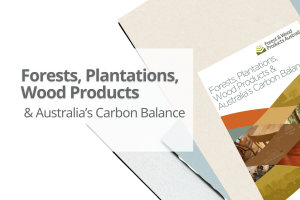The introduction of Emissions Reduction Fund (ERF) method has the potential to directly assist Australia in reducing its greenhouse gas emissions by incentivising greater use of sustainable timber in the structural components of residential and non-residential buildings in place of more emissions intensive building materials, like steel and concrete.
The introduction of the proposed ERF method may also lead to an increase in Australia’s carbon sequestration potential through an increase in the domestic supply of softwood sawlogs. An increase in supply is predicated on increased sawlog demand placing upward pressure on sawlog prices and incentivising investment in domestic sawlog supply.
Key findings from the study include:
- 1) A 1% upward shift in the market share of structural timber in place of steel and concrete, in class 1, class 2 (below 9 storey) and non-residential buildings over the period of 2021 to 2050 would reduce emissions by 1.3 Mt CO2-e in total and 1.0 Mt CO2-e domestically.
- 2) The domestic emissions reduction from a 1% upward shift is equivalent to 0.03 Mt CO2-e annually over the assessment period. A 10% and 20% increase in market share over this timeframe is estimated to have a ten and twentyfold effect on the level of emissions reductions.
- 3) A 1% upward shift in the market share of structural timber will require a 5.3 million m3 increase in above ground tree biomass between present day and 2050. This biomass has the potential to sequester 4.7 Mt CO2-e, which equates to 0.15 Mt CO2-e of reduced emissions annually.
Annual emissions reductions from a 1% increase in the market share of timber combined with potential additional annual carbon sequestration is equivalent to 2.2% of the abatement purchased by the Clean Energy Regulator in 2020. When these emissions reductions are combined (direct and indirect emissions reductions), the emissions reductions from carbon sequestration account for about 80% of the total estimated emissions reductions from the proposed ERF method. However, there is less certainty associated with emissions reductions from carbon sequestration than with the emissions reductions from greater use of sustainable timber. This is because an increase in sawlog supply is dependent on softwood sawlog prices increasing sufficiently to stimulate additional domestic plantation investment.
Project number: PRA541-2021


